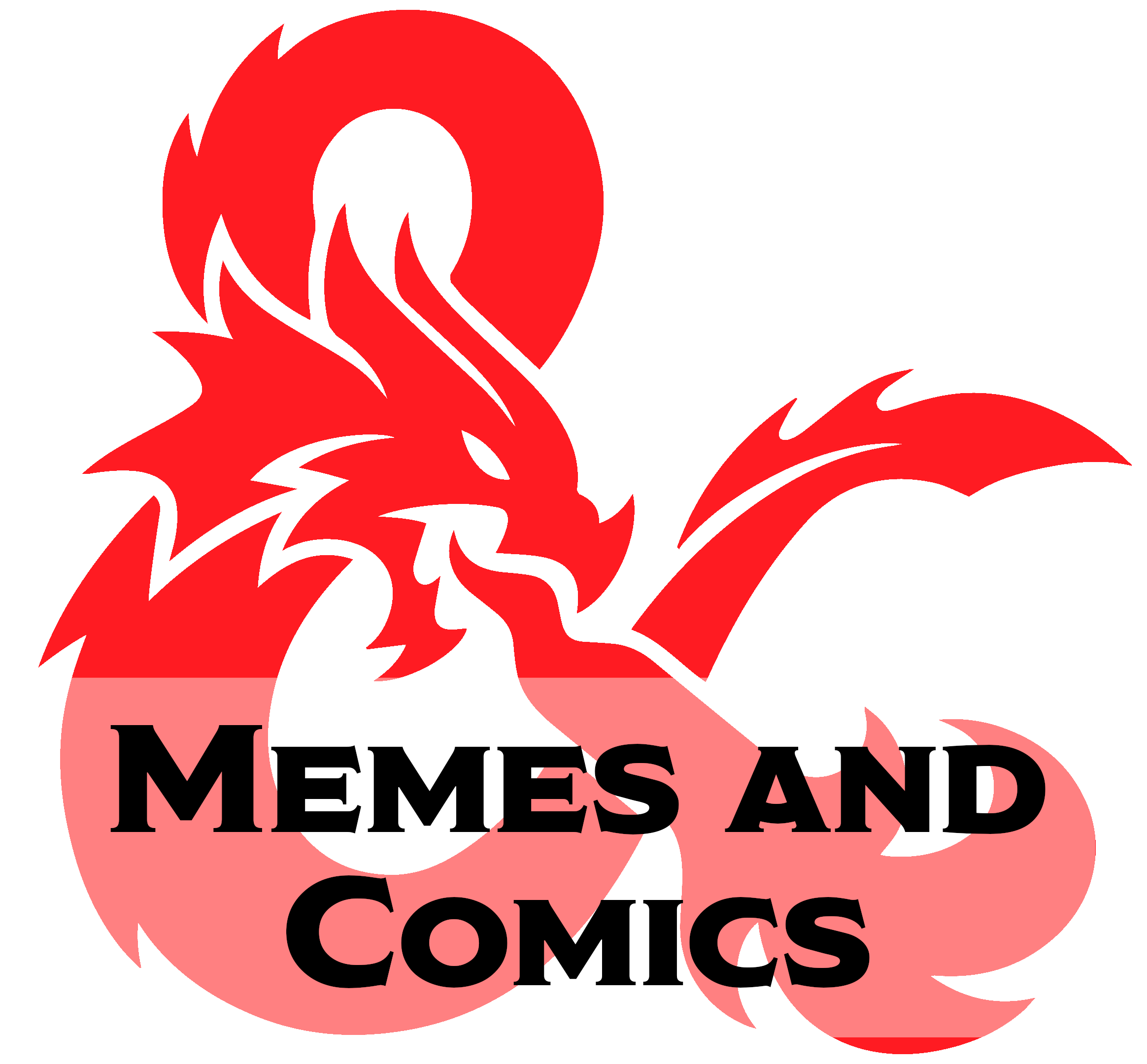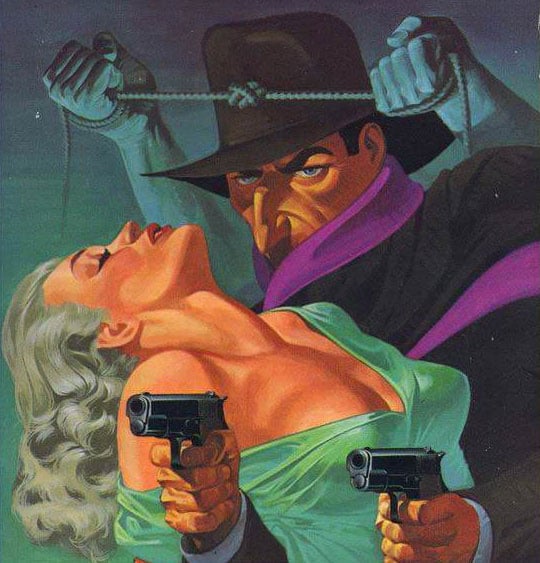There were some neat ideas in 4th at least.
I look at editions as toolboxes to draw from in my own game, and 4th had a few good tools to it. The forest might have been unwanted, but there were some pretty trees.
Man, I still think 4e’s at-will / encounter / daily powers were an interesting idea that made non-magical classes more fun to play, balance issues aside. People complained that it made the classes too samey, (which is a valid criticism). But damn, I want cool, once per day fighter abilities on par with a spell.
I also thought that the progression of class -> paragon path -> epic destiny was badass and really enhanced the storytelling aspect of a character.
People complained it was too much like a video game, because it used actually good game design principles.
Edit: apologies for waking a necrothread.
I tried running it once, with some video-gamers, and they friggin’ loved it. Only problem was the ability cards were way out of print by that date, and I didn’t understand that you really need those after level 2 or so. Tracking all the different ability types is just a nightmare, grinding the overall pace of the game to a snail’s pace without them.
Looking back on it critically, I don’t like having to dump more money into WotC’s pockets to make the core books playable. I do appreciate that they attempted to streamline things, and for the right table, it’s a good design. I did print some proxies up and tested some combat and man was it punchy and fast. If money was no object, I’d absolutely run what is otherwise a DnD-flavored “deck building game” with level progression.
I still like minions as a concept. Dinky little guys that have 1 HP but if ignored will still do a decent amount of damage?
Yeah it’s good stuff. Still rewards people for splitting fire too so suddenly it’s fine to attack zombie ABC even if your ally has already damaged zombie XYZ.
4th edition gets a lot of hate but I definitely enjoy borrowing things from it.
I did a few 4th edition sessions and I cannot quantifiably say I’ve had a worse time than my 5th edition sessions.
Meanwhile Pathfinder’s out there doing the royal bastard thing, just one mentor and magic sword away from becoming the chosen one.
I’ve played different systems, and they’ve had their pros and cons, but PF was my first and I just keep coming back.
I learned Adv and then got too lazy to ever upgrade my knowledge and books, so I still play that (with feats)
I kinda like super slow leveling. Less fucking around with books and more RP, magic items more impactful, every step up feels more special. But then ofc you’re still level three 8 games in
I used to play adv. back in the day. Also rules were more like guidelines anyway.
Yeah look at what video games have to do to match a fraction of our power
I feel like most people who hate on 4e didn’t play it much, but enjoy feeling like they’re part of the group.
Yeah, 4e doesn’t deserve the hate it gets. I found it much more mechanically engaging to play than 3.X or 5e.
4e was when WotC discovered D&D has a very large problem - it’s not allowed to change anything, for worse or better.
4e was when WotC discovered D&D has a very large problem - it’s not allowed to change anything, for worse or better.
This is true.
They’re so close to discovering dice pool with advantage/disadvantage.
I started thinking about a 5e hack that converts the whole thing to a dice pool system. Instead of 1d20+X, it’s Xd20. You can then have degree of success via “how many dice hit the number?” and degree of difficulty via “you have to hit X times”
There’s a ton of other stuff I’d love to see changed. Mostly around the adventuring day and only-spellcasters-get-cool-stuff
That’s why 4E is so good. 4E says “all adventurers are magic users. Having muscles so big they bend reality in your favour is magic. Being great at inspiring your team is magic. Being able to blend into the shadows so well you were never even there is magic. Nobody is a boring normal in this system.”
“Also here are abilities that recharge every encounter. Now you don’t have to worry about short rests.”
Well, I have good news! There’s a huge number of other systems out there, most of them are quite good, and there’s plenty of very interesting mechanical innovation going on. I encourage you to explore, D&D isn’t the only game in town. ;-)
I’m well aware. I have a weekly game of Fate, and played a lot of nWoD over the years. The trouble is usually finding players.
Also sometimes players who only play D&D pick up bad habits and narrow views of things, and it can be hard to change their habits. In my Fate game, the players often forget the wide range of things they can spend fate points on,
I was about to say, if you like dice pools try nWoD/CoD lol.
As for FATE, my players have the same problem. And I forget to compel a lot of the time to give them FATE points, which doesn’t help, either.
In my first couple Fate games I didn’t get a lot of good compels in. But in this game my players have 3 aspects right now that are super easy to compel on:
- “maybe the answer is violence”
- “compulsive truth teller”
- “[hostile NPC faction] bounty on your head”
If the players are dicking around too much, compel on maybe the answer is violence - get in there and do something. Fucking around with the NPC instead of advancing the plot? Compel to tell the truth and let’s see what blows up. And if all else fails, fuck it, some goons from Razor can show up.
It’s been a lot of fun.
The players haven’t quite got a handle on self-compels yet, though.
Agreed. With how many people started with 5e the older 3.5 cohort who shat all over 4e are in the minority. Plus I feel like a 5e player would more easily transfer over to 4e then 3.5
people like to shit on 4e, but every time anyone tries to actually explain why it was bad it just makes me wish for it more.
The way they told me is that every class of 4th edition effectively had 2 builds.
Every level had 2 choices: one that fit your build and one that didn’t.
Choosing any option that wasn’t on the build was useless.
Then there is also something about cooldown abilities, which is hard to keep track of on boardgames.
Except cooldowns were extremely straightforward? You had at-will abilities (use as often as you want), encounter abilities (once per fight), and daily abilities (once per day). Easier than tracking spell slots.
Sounds like Baldur’s Gate 3 in a way
It felt like they were trying to make an MMO be a table-top game at the time when WoW was at the height of its popularity (that WotLK nostalgia). Its not that it was overly bad, it was a square peg, round hole situation.
These days I feel like 5E has no teeth, very good intro but beyond the first few campaigns and the endless art books its mechanically uninteresting. Pathfinder 2e has been what most of my games have converted to.
I have heard the ‘4e was MMO edition’ critique multiple times and not once has anyone been able to articulate why 4e was specifically like WoW in a way that wasn’t outright false or was so broadly similar that it applied to nearly all fantasy RPGs, electronic or tabletop.
Painting in broad strokes here as its been over a decade since D&D v4 and WoWs high-water mark, I think people call it that because of several factors, not all of them in the game design of v4.
- It was the begining of the trends that we see today in 5e where the stock classes were designed to fit the archtype, not the style. If you played something out of the base books, it just had to work and character progression was boiled down, you had to try to brick your character.
- This was also around the time when WoW was changing its mentality to “bring the player, not the class”. This still holds up today where they design content around the players being there, not what was there. Fewer class specific shortcuts or tricks, unique traits. No one single common ability is unique to a class. For example, need temporary invuln to eat one hit that causes max damage, bring a pally, mage, or hunters.
- The migration from 3.5 to 4 left a void in class/race variety as the prestige classes took a while to convert to the new system, many were lost. Like when Disney bought Starwars and threw all the extended universe content out. D&D 3.5 had an alarmingly high number of suplimental books.
- The increase in charts in v4 felt like they could have fit more in with a PC RPG, I do realize the irony in the success of Pathfinder 1 as it just took that “charts for days” concept and ran with it.
D&D v4 to me will always be the MMO version because it was a product of its time, and also WotC scrapped pretty quickly, relativly speaking.
It’s better for games where you actually have a table with miniatures imo, but the rules seemingly being structured around this was not great for strictly paper adventures. Grappling was simpler, I guess.
I’ve erased enough shitty movie sequels from my memory to know where this is going.
There is no movie in Ba Sing Se.
Here we are safe. Here we are free.
I started with 4e, so I have fond memories, but my friends and I also had no idea what we were doing and just made a bunch of stuff up, so that probably helped.
We don’t talk about 4-E, no, no, no, we don’t talk about 4-E!
Having played all the editions in the comic, I’m going to go out on a limb and say that 4e is unfairly maligned and I would rather play it over Advanced 2e or 3.5.
The powers system gets bloated fast, but offloading potentially broken support spells and powers into 10min to 1 hour rituals is genius. 4e has the only useful version of Pyrotechnics between the listed editions.
Short Rests being 5 min instead of 1 hour really feels like the pace of encounters keeps up without any awkward pauses, and means encounter powers are reliably up by the next fight.
The understanding that mechanical roles and flavor power sources could be swapped around and make a bunch of classes instead of trying to theme classes solely around fantasy archetypes let them have greater design freedom.
Short rests and powers attached to them, subclasses being a core part of the basic classes, ritual casting, at-will basic spells for casters, & proto-advantage in some class abilities are all extracted from 4e.
5e isn’t bad - its arguably the best version of D&D. But I’ve seen a lot better fantasy systems than D&D, and some fantastic mechanics left on the cutting room floor between NEXT and 5e.
Hate new shit.
Love me 20 sided die.
Simple as.
4E got a lot of people who never would try D&D into playing. At least from my experience.
From a very narrow perspective 4th was good.
That perspective was new people who knew nothing, and played briefly or got really in to competitive play.
Viewed from any other angle 4th was a pile of dog shit.
WHAT DO YOU MEAN MY ONCE DAILY MISSED. I HAVE ONE FUCKING SHOT WITH THIS PER SESSION AND I MISSED.
fucking infuriating.
Most of my group started with 4E. They love it. I’m a 3.5 child, so 4e is just weird to me.
If anyone’s hankering after a 4e-alike that’s actually good, try the new MCDM/Matt Colville RPG ‘Draw Steel’.
As a former My Little Pony fan, this sentiment follows many fandoms that span generations.
Ootl here, I’ve started playing in 3.5, stopped playing for a decade and a half and picked up 5e when I got back in ttrpgs. Anyone has pointers to a good summary of why 4e was different and why it got the hate ?
I’m a 4e fan, ran games with it for five-ish years, and hope to run games in it again one day. People point to one thing or another, trying to emulate mmos or making everyone essentially a wizard, and what have you. I don’t think any of that was really the problem, or that they were necessarily even true.
4e suffered from three things mainly that really killed it:
-
it fundamentally misunderstood what people liked about or wanted from dnd. 4e is almost a pure dungeon crawler and is perfect for an older style of game which is chiefly played in dungeons without too much time in the overworked, and most of the adventures released for 4e reflected this past style as well. The demographic for that style of game was exceedingly small at the time of its release, and has only gotten smaller.
-
4e is completely drowning in bloat. Item bloat, power bloat, feat bloat - after fifth level, your character sheet becomes so unwieldy that it slows combat to a crawl all by itself. And 4e combat is already slow. They tried to mitigate this with cards and online tools, but the cards were just as unwieldy and the online tools never really got off the ground. The character creator app was great, but everything else never made it past development. (Due to a murder-suicide thing, actually, but that’s another story)
-
4e did not have an OGL, instead using the GSL which restricted a lot of the rights of third party creators. As a result, 4e had virtually no third-party support, which means that all of the companies that made content for 2e and 3/3.5 had to start making content for other games. Most famously, this resulted in the creation of Pathfinder, transforming Paizo from a company that published dnd-centered content to arguably its chief competitor.
A lack of third party materials plus the poor cost-to-benefit ratio of Wizards producing adventure modules on its own meant that 4e had a lineup of books that were largely core rules expansions or setting splatbooks(both expensive products for the consumer), but very few adventures. That translates to poor shelf presence, less actual play time, poor word of mouth, etc. Before you know it, the only people that ever talk about 4e are the people who didn’t like it, since most other people didn’t even play it.
Some of the stuff that people didn’t like about 4e: the powers system, the lack of social interaction rules, the skill challenge minigame, movement to a hard grid-based system, and game mechanic being expressed in doyalist terms. They also felt that the games’ reliance on keywords was video game-ish and added a limiting amount of granularity.
The powers system is flawed, yes. Its one of the main causes of character sheet bloat. But the complaint that all classes play the same because of it is not really founded. Every class gets powers and they are all structure similarly, but that’s really the result of a well designed and highly functional system. The actual content of the powers is pretty diverse, leading to unique playstyles across all the core classes and amazing moments of synergy.
I have yet to find an edition of DnD with great social interaction rules. I feel like people just throw this one on there.
The skill challenge has been re-evaluated in recent years, and most tables use some variation on this mechanic in their 5e games.
The grid system used in 4e is still used in 5e to this day - they just changed the notation from squares to feet. This is why we don’t have to do any taxing diagonal movement math in 5e. It seems this one change eliminated most peoples problems with it and showed them how they could still use it for theatre of the mind style play.
The doyalist design of the books, combined with all the keywords, is actually pretty good design. DMing a 4e game is a dream for these reasons. And most ttrpgs employ a more doyalist design philosophy anyway - but 3.5 didn’t. Which is why it felt bad, I think, to people who tried converting over. Gotta say I agree with the granularity issue, though.
One of the ironic things is, people don’t realize just how much of 4e’s DNA is in 5e. 5e is sort of just a bunch of good ideas from 3.5 and 4e shoved together, their respective bloat removed, and trimmed up with bounded accuracy.
This turned into something longer and more ranting than I originally intended, but I’ll leave it as is and hope you find value in it.
this comment is the 4e of comments
So I think you’re right in a lot of ways. But I think your understating a few things.
First, OGL. OGL was great for 3.x edition. It spawned a cottage industry of 3rd party content creators, which by the end of the life cycle, had created content that which was smoother and more refined in the engine than anything WotC ever produced. This allowed 3.x to dig in and become immensely established. The problem is is that it cuts both ways; in 4e era, WotC’s biggest competitor was actually Paizo.
I liked 4e, I think its better than 5e. But WotC became way harsher on piracy and 3rd party content in that era. The way powers were structured and templates, it became impossible to keep up with everything without their builder spoon feeding it to you. They were really pushing their “adventure tools.” These were buggy, half of them never came to fruition, and they didn’t run on mac (even though they were browser based). They only stopped pushing them after they bought a third party site (D&D beyond, which I actually ban from my games). I’m just saying that 3.5 was an accessibility dream, and 4e was actually behind lock and key.
Meanwhile Paizo had the immensely easier job of selling 3.5 weirdos back 3.5, and WotC couldn’t stop them because of the OGL. For a while, I thought Paizo was actually doing worse damage to the industry; I was afraid no one would want to innovate if people were just going to play 3.x until the end of time. I guess I was right, because 5e is basically 3.5 will all the interesting parts cut off. And thats why WotC was trying to kill the OGL last year, in the weird way they did. They want the control, but they want the 3rd party support too.
The other thing you understated was just how many grognards there were for 3.x. I literally had a 5e baby pitch to me a cyberpunk 2077 game that he would run in starfinder, but 3.x guys refused to try out 4e. Their complaints were as many as they were meaningless. Orcs aren’t core? All classes get spells? I can see the WoW recharge timers! A lot of enfranchised gamers simply did not want to play a new game, and then PF came along, and they did not have to. I saw it happen in my game group, but this also was borne out in paizo’s ascendancy in this era.
I want to say one thing to your point @Colalextrast@lemmynsfw.com, that 4e had too much bloat; 3.x had a ton of bloat as well. At least every power in 4e was like, functional. 3.x had dozens of base classes and hundreds of prestige classes that were traps. Hundreds of feats that were not good. I think 1200 officially published spells (at least you could swap those out). The only reason 3.x combat wasn’t a crawl was because it was rocket tag; high level spellcasters usually end the fight in one move.
-











